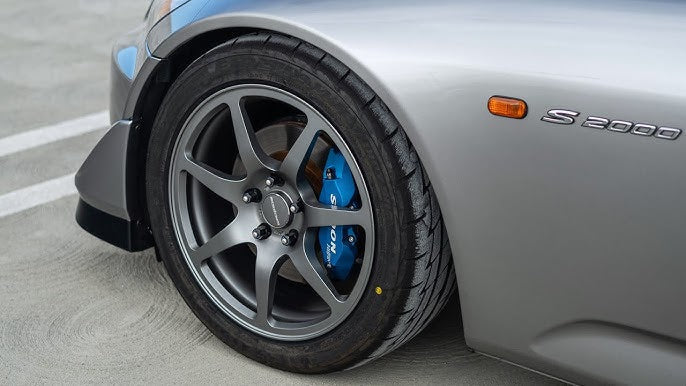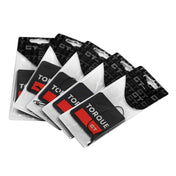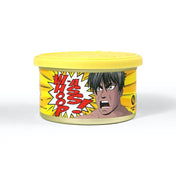We recently had a customer with a track-driven Honda S2000 get in touch after repeatedly experiencing heat cracking in his front brake discs. He’d already tried several different combinations of pads and discs over multiple track days, including some Dixcel options, but the issue persisted.
As the distributor of Dixcel brakes, we're thankful to have a close working relationship with their technical team who can offer some deeper insight in situations such as this - and what they shared was both eye-opening and extremely helpful.
Why the S2000 is Tough on Brakes
According to Dixcel, this isn’t an isolated case. The Honda S2000, especially when driven hard on track, is notoriously demanding on brakes. They’ve seen similar issues first-hand in Super Taikyu endurance racing in Japan, where S2000s are pushed to their limits over long stints.

Part of the issue lies in the S2000’s front caliper setup. It uses a floating caliper, which can cause uneven pad pressure when braking. When the brake pedal is pressed, the caliper jaws clamp onto the pad - this applies more pressure to the centre and outer edge of the disc first, while the inner edge sees less pressure.
In day to day driving, this is really a non-issue, but when pushing hard on track with higher friction pads which generate more heat, this becomes more problematic.

Over time, this uneven pressure distribution leads to heat building up more intensely in certain zones of the disc - particularly in that high-pressure band near the centre and outer - and that’s exactly where heat cracks tend to form.
As can be seen here, the centre and outer edge of the discs have more cracking than the inner edge.

Visual Proof: Thermography Data
The other part of this equation is heat.
Dixcel shared a thermographic image showing temperature distribution during heavy braking on three of their disc types - FP, FS and FC.
On FP and FS discs, there’s a distinct heat band where the piston pushes the pads - lining up perfectly with where cracks are developing, largely in the centre of the disc.
By contrast, when using their curve-slotted FC discs, the heat is much more evenly spread across the rotor surface. This is largely due to the slot geometry, which helps improve pad contact and airflow, helping in reducing those extreme hot spots.

Possible Solutions
So, while some heat cracking is to be expected under aggressive use - especially on track - there are a few ways to manage or reduce the issue:
🔁 Upgrade to curve-slotted FC Type discs
These help distribute both pad pressure and heat more evenly, minimising high-stress zones and reducing the likelihood of localised cracking.
🧪 Consider pad compound
Selecting a pad with a milder initial bite than more aggressive compounds can help reduce peak thermal loads during braking. Consider the ABS-friendly Dixcel RE Type.
💨 Add brake ducts
Directing airflow to the brakes significantly lowers operating temperatures and helps reduce the heat stress that accelerates disc fatigue and cracking.
🛠️ Address the caliper design
We were intrigued by Dixcel's comments about how the S2000’s sliding caliper contributes to the issue. We asked specifically about the Spoon Monoblock caliper, which uses an opposing piston layout. Dixcel responded:
“Yes, I think it is a good idea to suggest Spoon calipers. It will solve/improve the uneven pressure distribution. And Spoon calipers are not expensive - unbelievable value!”

By swapping to the Spoon Monoblock caliper, the uneven pad wear can be largely eliminated, providing more consistent pad pressure across the disc face, whilst also benefiting from more efficient heat dissipation thanks to the monocoque aluminium construction. This upgrade not only improves braking feel but can meaningfully reduce uneven heating that leads to disc cracking.
Final Thoughts
This kind of issue isn’t always straightforward. It’s often a combination of vehicle design, driving style, component choice and cooling. Having access to feedback from companies like Dixcel, who test under real racing conditions, makes a big difference when trying to troubleshoot persistent problems like this.
If you’re running an S2000 on track and seeing similar wear patterns or heat cracks, it might be worth revisiting the full brake setup - not just the pads and discs, but also the caliper design and cooling strategy. Sometimes, a targeted change (like upgrading to FC discs or switching to a more suitable caliper) can make a major difference in reliability and performance and keep you on track for longer!




